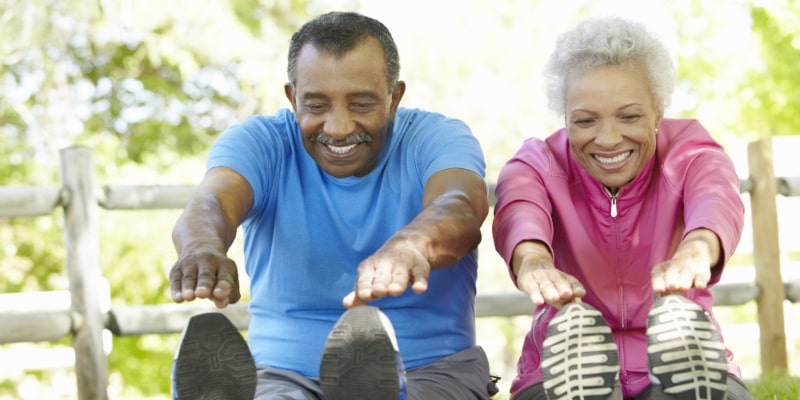Stretching regularly and maintaining flexibility is important at any age, but for seniors, working on flexibility can help with a variety of tasks like bending over to pick up objects or reaching for something on a shelf. In this blog, we’ll talk about the importance of stretching and offer some examples of simple stretches for seniors.
Who Should Consider Stretching
Stretching is ideal for those who are currently independent and limber as well as those who have lost flexibility over time and are working to increase their range of motion. In reality, everybody should stretch regularly, but it's especially critical as we get older.
The Importance of Consistency
While a single stretching session is unlikely to leave you limber and flexible, stretching consistently produces slow but steady change in your body. A little stretching every day is ideal, but three to four times a week is still beneficial.
The Benefits of Stretching
Regular stretching for seniors provides both physical and mental benefits:
- Stretching can help you reduce arthritis pain in your lower back and joints
- Regular stretching can help you reduce your risk of falling by improving stability and balance
- Stretching improves your posture, which prevents injuries and pain over time
- It increases blood flow to your muscles and gives you energy
Over time, stretching can loosen up tight muscles, expand your range of motion, and make it easier to perform everyday activities as you get older.
Group Fitness That Promotes Stretching
Looking for the right group fitness activities for guided stretching and exercise? Yoga, swimming, Pilates, Tai Chi, and Zumba are all appropriate for older adults and guide you through stretching, strengthening, and aerobic exercise. Many retirement communities - including assisted living, memory care, and skilled nursing communities - offer regular stretching and exercise classes as a part of their life enrichment calendar.
6 Daily Stretches Ideal for Retirees
Taking a moment every day to do these 6 stretches can help you focus on each part of your body and experience the long-term benefits of regular stretching in retirement - which include less pain and more adventure. There are hundreds of free photos and videos online if you'd like a guided stretch and don't have access to group classes.
- Triceps stretch. With your fingertips on the left hand, touch the back of your left shoulder or upper back. Use your right hand to put gentle pressure on the left elbow to deepen the stretch. Repeat on the right side.
- Neck side stretch. In a seated or standing position, simply tilt your head to the left, closing the gap between your ear and your shoulder, until you feel the stretch on the right side of your neck. Hold for 20-30 seconds, and then tilt to the right and repeat.
- Ankle circles. In a seated position, move your toes in a clockwise circle several times. Stop and change direction, moving your toes counter-clockwise several times. This provides a good stretch for your ankles.
- Shoulder stretch. In a standing position, clasp your hands together behind your back, near your tailbone, and hold for 20-30 seconds.
- Overhead side stretch. In a seated position, reach both hands over your head and gently lean to the right, holding the stretch for 10-20 seconds. You can use the left hand to gently pull the left hand toward the right side of your body to deepen the stretch. Repeat on the left side.
- Spine stretch. In a seated position, hug yourself and gently twist your upper body to one side, hold for 10 seconds, and then the other, holding again.
Repeat each of these stretches three to six times for the best stretch.
Tips for Effective Stretching
Always warm up before you begin stretching to avoid injury. A brief walk is a great way to warm up your muscles.
Be aware of any pain you experience while stretching, and ease up on the stretch to alleviate the pain. The goal is to feel the stretch without experiencing pain, so pain is an indication that you've gone too far.
Hold each stretch for at least 30 seconds for maximum benefit and don't forget to take deep breaths in and out throughout the session.
Staying Safe
In order to prevent injury, it's important to talk to your primary care provider before beginning a new exercise or stretching routine, especially if you have underlying health conditions or are recovering from surgery or illness. Remember that the more regularly you stretch, the less likely you are to experience an injury. Know what you can and can't do, and stop when you experience pain.
Stretching can help you stay limber well into your retirement years so they're as relaxing and adventurous as you hoped they'd be. Retirement communities like assisted living and memory care communities often provide daily opportunities for guided stretching in a safe and social environment at no additional cost; just one of the many benefits of retirement in a group setting.





